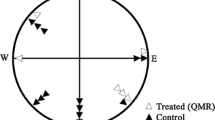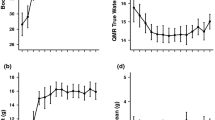Summary
To formulate a comprehensive plan for the conservation of the White Stork (Ciconia ciconia) in conformity with the “Bonn Convention”, along the eastern migration route from the breeding grounds across Israel into the staging areas in northeastern Africa, it was essential to investigate the entire process of migration, including resting behaviour as well as the energetic and ecological aspects. Our approach employed satellite tracking (of 75 individuals), observations of storks in aviaries by methods including magnetic resonance imaging (MRI) and spectroscopy (MRS) (12 birds over 15 months), and extensive field studies. The main result of the investigation is that the White Stork exhibits, at least on the eastern route, a particular mode of migration not previously described in this form for any bird species, with the following characteristics: (i) very rapid travel from the breeding region into the North African staging areas, normally with flight periods every day, lasting about 8–10 hours and separated by 14–16 hours of rest. The ca. 4600-km distance to latitude 18°N is covered in an average of 18–19 days by both young and adult storks. (ii) Rest periods of a whole day or even several days are the exception, and their occurrence seems to be prompted by external circumstances rather than prescribed in the endogenous migration program. (iii) Body mass and fat deposition are low during the outward (and the homeward) journey and peak in midwinter, which is interpreted as an adaptation to unpredictable conditions in the winter quarters. (iv) There is no discernible hyperphagia during migration; instead, on the outward journey the storks evidently feed mainly to meet their immediate needs when in eastern Europe, more opportunistically when approaching the Mediterranean Sea, and practically not at all in Israel. According to this observation and the comparison of body weights in Sachsen-Anhalt and Israel, it is likely that storks lose weight on the outward trip and do not regain it until they reach Africa. We call the migration mode of the White Stork, which travels predominantly in gliding flight, the MSOM type (from “mostly travelling every day”, “seldom inserting whole-day rests”, “opportunistically feeding” and “moderate or no fat depots developing”), and distinguish it from the types ILHB (for intermittently migrating) and NNHB (migrating non stop) (see Discussion). The results of this study, in particular regarding fat deposition and state of breast musculature, are based substantially on MRI and MRS; these methods, tested here in a pioneering long-term study of a bird species living in the wild, have proved extremely useful and show great promise (see following paper).
Zusammenfassung
Für ein umfassendes Schutzkonzept für den Weißstorch (Ciconia ciconia) im Rahmen der „Bonner Konvention“ entlang der Ostroute von den Brutgebieten über Israel bis in nordostafrikanische Zwischenziele war es erforderlich, den genauen Zugablauf, das Rastverhalten sowie Fragen der Zugenergetik und Zugökologie zu untersuchen. Wir bearbeiteten die Fragen mit Hilfe der Satelliten-Telemetrie (75 Individuen), der Untersuchung von Störchen in Volieren einschließlich der Magnet-Resonanz-(MR-)Tomographie und -Spektroskopie (MRS) (12 Vögel, über 15 Monate) sowie umfangreicher Freilandstudien. Das Hauptergebnis der Untersuchungen ist: Der Weißstorch zeigt — zumindest auf der Ostroute — einen eigenartigen, bisher von keiner anderen Vogelart in dieser Form beschriebenen Zugmodus mit folgenden Charakteristika: 1) sehr zügiges, normalerweise tagtägliches Wandern vom Brutgebiet bis in die nordafrikanischen Zwischenziele, wobei täglich etwa 8–10 Stunden gewandert und 14–16 Stunden gerastet wird. Die rund 4 600 km bis zum 18. Breitengrad werden von Jung- wie Altstörchen im Mittel in 18–19 Tagen bewältigt. 2) Ganz- oder gar mehrtägige Rast wird nur ausnahmsweise eingeschoben und scheint eher durch äußere Umstände erzwungen als im endogenen Zugprogramm vorgegeben zu sein. 3) Körpermasse und Fettdeposition sind während des Wegzugs (und des Heimzugs) niedrig und erreichen Gipfelwerte im Mittwinter, die als Anpassung an unvorhersagbare Bedingungen im Winterquartier gedeutet werden. 4) Zugzeitliche Hyperphagie ist nicht erkennbar, vielmehr nehmen Störche während des Wegzugs Nahrung in Osteuropa wohl v. a. zur Deckung des Unterhaltsbedarfs auf, zum Mittelmeer hin mehr opportunistisch und in Israel so gut wie gar nicht. Dadurch und aus dem Vergleich von Körpermassen in Sachsen-Anhalt und Israel wird wahrscheinlich, dass Störche auf dem Wegzug an Masse verlieren, die dann erst in Afrika wieder aufgefüllt wird. Wir bezeichnen den Zugmodus des überwiegend im Gleitflug wandernden Weißstorchs als MSOM-Typ (von „Meist täglich wandernd“, „Selten ganze Rasttage einlegend“, „Opportunistisch Nahrung aufnehmend“ und „Maximal Mittelmäßige Fettdepots bildend“) und stellen ihm die Typen ILHB (für intermittierend ziehend) sowie NNHB (nonstop wandernd) gegenüber (s. Diskussion). Die Ergebnisse dieser Arbeit, v. a. über Fettdeposition und Brustmuskelzustand, beruhen ganz wesentlich auf der MR-Tomographie und MR-Spektroskopie, die hier in einer Lang-zeit-Pilotstudie an einer wild lebenden Vogelart zum Einsatz kam und sich als sehr nützlich und vielversprechend erwies (s. die nachfolgende Arbeit).
Similar content being viewed by others
Literatur
Alerstam, T. & Lindström, A. (1990): Optimal bird migration: The relative importance of time, energy, and safety. In: Gwinner, E. (Ed.): Bird migration: 331–351. Berlin.
Allan, D. (1989): Results of a national stork counting weekend in South Africa. In: Rheinwald, G., Ogden, J. & Schulz, H. (Eds.): Weißstorch — White Stork. Proc. I Internat. Stork Conserv. Symp. Schriftener. DDA 10: 365–371.
Bairlein, F. (1991): Population studies of White Storks (Ciconia ciconia) in Europe. In: Perrins, C. M., Lebreton, J.-D., Hirons, G. J. M. (Eds.): Bird Population Studies: 227–229. Oxford.
Bauer, K. M. & Glutz von Blotzheim, U. N. (1966): Handbuch der Vögel Mitteleuropas. Band 1. Frankfurt/M.
Berthold, P. (1996): Control of Bird Migration. London.
Berthold, P. (2000): Vogelzug. Eine aktuelle Gesamtübersicht. 4. Aufl. Darmstadt.
Berthold, P., Bossche, W. v. d., Fiedler, W., Kaatz, C., Kaatz, M., Leshem, Y., Nowak, E. & Querner, U. (2000): Detection of a new important staging and wintering area of the White StorkCiconia ciconia by satellite tracking. Ibis 142 (im Druck).
Berthold, P., Bossche, W. v. d., Fiedler, W., Kaatz, M. & Querner, U. (2001): Ökophysiologische Untersuchungen am Weißstorch: Grundlagen für weitreichende Schutzmaßnahmen. In: Kaatz, C. & Kaatz, M. (Hrsg.): Tagungsbandreihe des Storchenhofes Loburg im MRLU-LSA (im Druck).
Berthold, P., Elverfeldt, D., Fiedler, W., Hennig, J., Kaatz, M. & Querner, U. (2001): Magnetic resonance imaging and spectroscopy (MRI, MRS) of seasonal patterns of body composition: A methodological pilot study in White Storks (Ciconia ciconia). J. Ornithol. 142: 63–72.
Berthold, P., Nowak, E. & Querner, U. (1992): Tracking White Storks on migration through Europe to Africa. ARGOS Newsletter 43: 1–3.
Berthold, P., Nowak, E. & Querner, U. (1997): Eine neue Dimension der Vogelforschung: Die Satelliten-Telemetrie. Falke 44: 134–140.
Biebach, H. (1977): Das Winterfett der Amsel (Turdus merula). J. Ornithol. 118: 117–133.
Bossche, W.v.d. (2001): Migration and wintering of White and Black Storks(Ciconia ciconia, C. nigra) in Israel. Dissertation, Univ. Antwerpen.
Bossche, W. v. d., Berthold, P., Kaatz, C., Kaatz, M., Leshem, Y., Nowak, E. & Querner, U. (1998): Migration patterns of eastern White Stork(Ciconia ciconia) population followed by satellite and ground observers. Torgos 28: 77–90.
Bossche, W. v. d., Berthold, P., Kaatz, M., Leshem, Y., Nowak, E. & Querner, U. (2001): Final Report of the Project „Conservation Outline for Eastern European White Stork Populations to the German Ministry of Environmental Affairs“. BfN-Skripten (im Druck).
Bossche, W. v. d., Kaatz, M. & Querner, U. (1998): Satellite tracking of White StorksCiconia ciconia. Ostrich 69: 152.
Dallinga, J. H. & Schoenmakers, S. (1989): Population changes of the white storkCiconia ciconia since the 1850s in relation to food resources. In: Rheinwald, G., Ogden, J. & Schulz, H. (Eds.): Weißstorch — White Stork. Proc. I Internat. Stork Conserv. Symp. Schriftenr. DDA 10: 231–262.
Fuller, M. R., Seegar, W. S., Schueck, L., Takekawa, J., Petersen, M. & Martel, M. (1998): Tracking North American migrants by satellite. Ostrich 69: 151.
Glutz von Blotzheim, U. N., Bauer, K. M. & Bezzel, E. (1971): Handbuch der Vögel Mitteleuropas, Band 4. Frankfurt/M.
Gorney, E., Clark, W. S. & Yom-Tov, Y. (1999): A test of the condition-bias hypothesis yields different results for two species of sparrowhawks(Accipiter) Wilson Bull. 111: 181–187.
Gorney, E. & Yom-Tov, Y. (1994): Fat, hydration condition, and moult of Steppe BuzzardsButeo buteo vulpinus on spring migration. Ibis 136: 185–192.
Hall, M. R., Gwinner, E. & Bloesch, M. (1987): Annual cycles in moult, body mass, luteinizing hormone, prolactin and gonadal steroids during the development of sexual maturity in the White Stork(Ciconia ciconia). J. Zool. 211: 467–486.
Kaatz, M. (1995): Bearbeitung, Auswertung und Dokumentation der über das Migrationsverhalten des Weißstorches gewonnenen Flugzeug- und Satellitendaten. Diplomarbeit, Univ. Rostock.
Kaatz, M. (2001): Der Zug des Weißstorchs(Ciconia ciconia) von Mittel- und Osteuropa über die Ostroute bis zum Nahen Osten. Dissertation, Univ. Halle.
Kerlinger, P. (1989): Flight strategies of migrating hawks. Chicago.
Kjellén, N., Hake, M. & Alerstam, T. (1997): Strategies of two ospreysPandion haliaetus migrating between Sweden and tropical Africa as revealed by satellite tracking. J. Avian Biol. 28: 15–23.
Krapu, G. L. & Johnson, D. H. (1990): Conditioning of sandhill cranes during fall migration. J. Wildl. Manage. 54: 234–238.
Leshem, Y. (1991): Study and forecast of fall and spring migration of soaring birds over Israel and the effect of climate factors on migration. Dissertation, Tel Aviv Univ.
Louie A. Y., Huber, M. M., Ahrens, E. T., Rothbacher, U., Moats R., Jacobs, R. E., Fraser, S. E. & Meade, T. J. (2000): In vivo visualization of gene expression using magnetic resonance imaging. Nature Biotechnol. 18: 321–325.
Michard, D., Zorn, T., Gendner, J.-P. & Le Maho, Y. (1997): La biologie et le comportement de la Cigogne blanche(Ciconia ciconia) révélés par le marquage électronique. Alauda 65: 53–58.
Michev, T. & Profirov, L. (1989): Der Herbstzug des Weißstorchs(Ciconia ciconia L.) entlang der bulgarischen Schwarzmeerküste. In: Rheinwald, G., Ogden, J. & Schulz, H. (Eds.): Weißstorch — White Stork. Proc. I Internat. Stork Conserv. Symp. Schriftenr. DDA 10: 281–295.
Milstein, P. le Sueur (1965): Uber BHC-vergiftete Heuschrecken als Nahrung des Weißstorchs in Südafrika. Vogelwarte 23: 117–121.
Moreau, R. E. (1972): The Palaearctic-African Bird Migration Systems. London, New York.
Nikolaus, G. (1989): Die Situation des Weißstorchs im Sudan. In: Rheinwald, G., Ogden, J. & Schulz, H. (Eds.): Weißstorch — White Stork. Proc. I Internat. Stork Conserv. Symp. Schriftenr. DDA 10: 337–340.
Pennycuick, C. J. (1972): Soaring behaviour and performance of some east African birds, observed from a motor-glider. Ibis 114: 178–218.
Schulz, H. (1988): Weißstorchzug — Ökologie, Gefährdung und Schutz des Weißstorchs in Afrika und Nahost. In: Umweltstiftung WWF-Deutschland (Ed.): Ergebnisse des WWF/ICBP-Forschungsprojektes: Gefährdung des Weißstorchs(Ciconia ciconia) auf den Zugrouten und in den Überwinterungsgebieten. Weikersheim.
Schüz, E. (1937): Vom Heimzug des Weißen Storchs 1937. Vogelzug 8: 175–183.
Schüz, E., Berthold, P., Gwinner, E. & Oelke, H. (1971): Grundriß der Vogelzugskunde. Berlin.
Shmueli, M., Izhaki, I., Arieli, A. & Arad, Z. (2000): Energy requirements of migrating Great White PelicansPelecanus onocrotalus. Ibis 142: 208–216.
Smith, N. G., Goldstein, D. L. & Bartholomew, G. A. (1986): Is long-distance migration possible for soaring hawks using only stored fat? Auk 103: 607–611.
Author information
Authors and Affiliations
Rights and permissions
About this article
Cite this article
Berthold, P., van den Bossche, W., Fiedler, W. et al. Der Zug des Weißstorchs (Ciconia ciconia): eine besondere Zugform auf Grund neuer Ergebnisse. J Ornithol 142, 73–92 (2001). https://doi.org/10.1007/BF01651740
Accepted:
Published:
Issue Date:
DOI: https://doi.org/10.1007/BF01651740




